back to home page
Introduction: What is Soft Robotics?
Robotics has experienced a huge growth in the last few years, but most of the robots are still made of hard rigid components, being too heavy and dangerous to interact with humans.
In order to solve this issue, there have been several studies in flexible robotics, resulting in robots with some flexible parts that allow them to collaborate with people. Finally, Soft Robotics arose as the last step in this evolution: robots whose main structure is made of soft materials, allowing a total cooperation with humans.
|
Hard Robotics

|
Flexible Robotics

|
Soft Robotics

|
Generally, soft robots are actuated by air or another pressurized fluid. However, some other materials enable the construction of this kind of robots. Take the case of SMA (Shape Memory Alloys), which deform under temperature changes, or electroactive polymers (EAP), which react to some external stimuli (e.g. electric fields).
Hydrogels, which are the materials that we will use in our research, are included in the last category (EAP).
Our research: Hydrogels in Soft Robotics
A hydrogel is a polymer network capable of absorb large quantities of water. What makes these materials so interesting is that the amount of water contained inside the gel defines its physicochemical characteristics. In this way, we can tune these features with the appropriate chemical design. Furthermore, the hydrogels we have developed have a strong resemblance with human tissues, they have the ability to self-heal, the ability to actuate and the ability to sense.
Self-Healing
As it can be seen in the following video, our hydrogels can self-heal without any external stimulus.
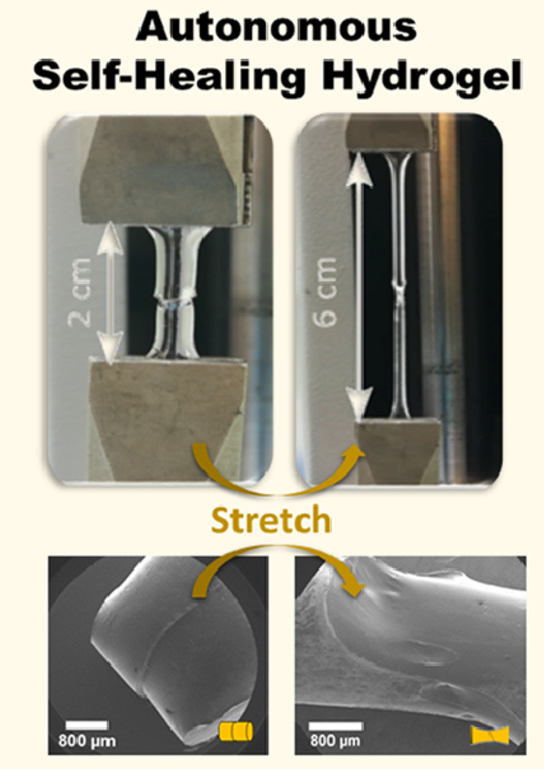 |
|
A. Naranjo et al., "Autonomous self-healing hydrogel with anti-drying properties and applications in soft robotics", Applied Materials Today, Volume 21, 2020, 100806, ISSN 2352-9407, https://doi.org/10.1016/j.apmt.2020.100806.
We use this ability in many soft-robotics aplications:
-
Self-Healing McKibben Muscle
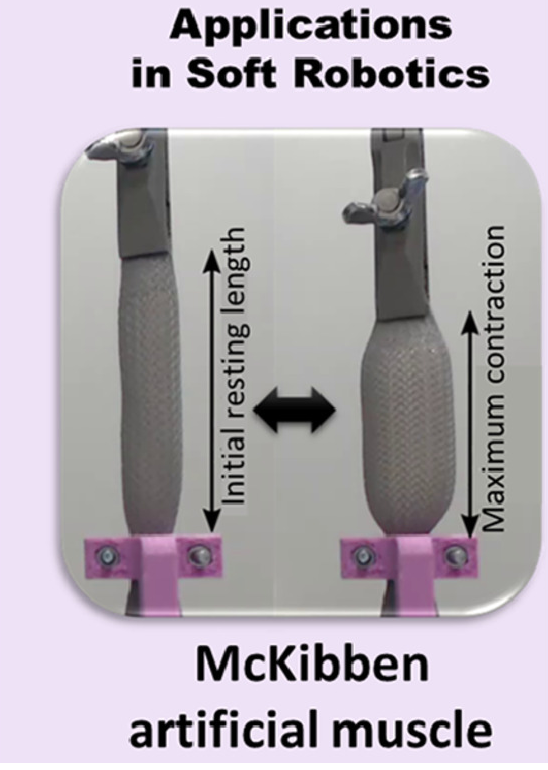 |
|
A. López-Díaz et al., "Autonomous self-healing pneumatic McKibben muscle based on a new hydrogel material," 2020 3rd IEEE International Conference on Soft Robotics (RoboSoft), 2020, pp. 13-18, doi: 10.1109/RoboSoft48309.2020.9115992.
-
Self-Healing based Assembly of Soft Modular Robots
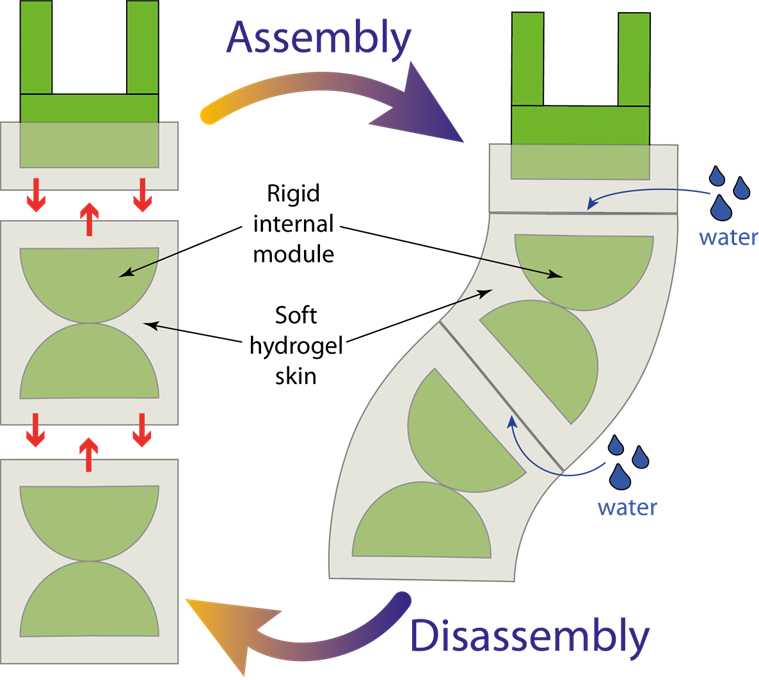
|
|
A. López-Díaz et al., "A novel hydrogel-based connection mechanism for soft modular robots" 2022 IEEE Internacional Conference on Robotics and Automation (ICRA)
-
Self-Healing Optical Tactile Sensor
*Inspired by GelSight sensor (Johnson and Adelson, 2009) and GelSlim tactile sensor (Dolon et al.,2018)
Actuation
Our hydrogel responses to electrical stimuli, which has been used to make soft actuators and fingertips of variable stiffness.
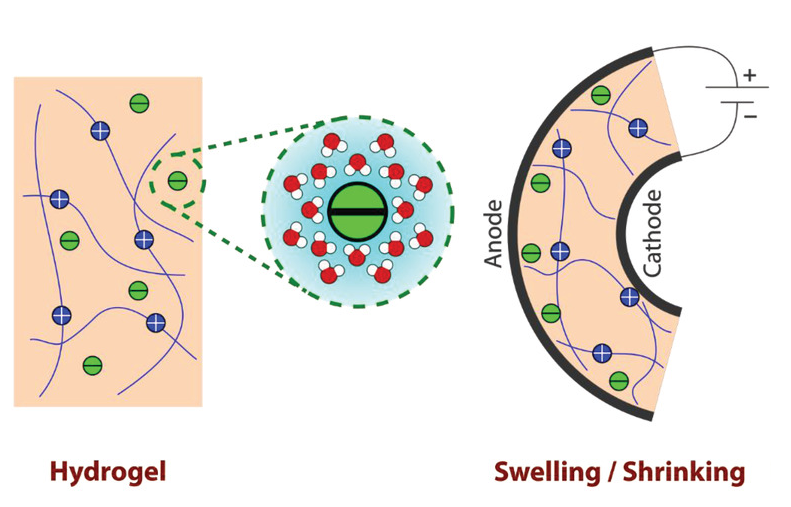 |
|
Antonio López et al. , “Concentration-Based Soft Robotics: Hydrogels out of Water" Advanced Functional Materials’20
-
Fingertips of variable stiffness
Antonio López et al. “A new soft fingertip based on electroactive hydrogels”. ICRA’19 .
Sensing
We work with the piezoresistive property of hydrogels in order to make proprioceptive and tactile sensors.
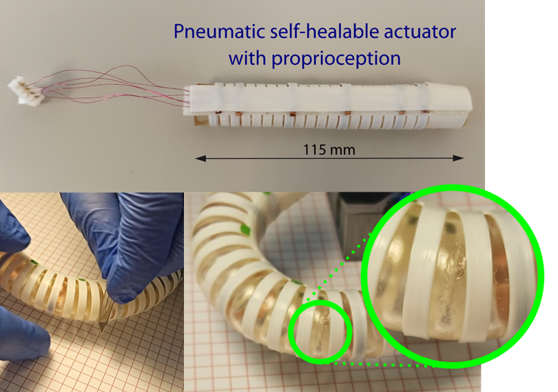
Antonio López et al. "Hydrogel-based soft pneumatic bending actuator with self-healing and proprioception capabilities". Robosoft 2022